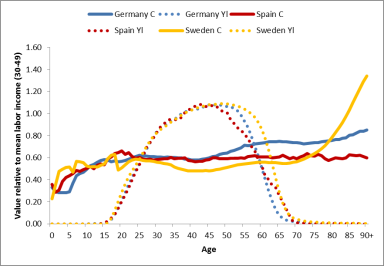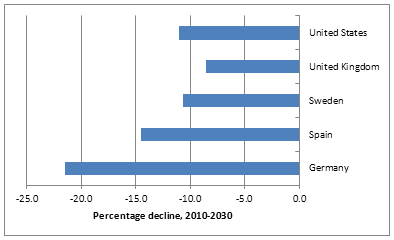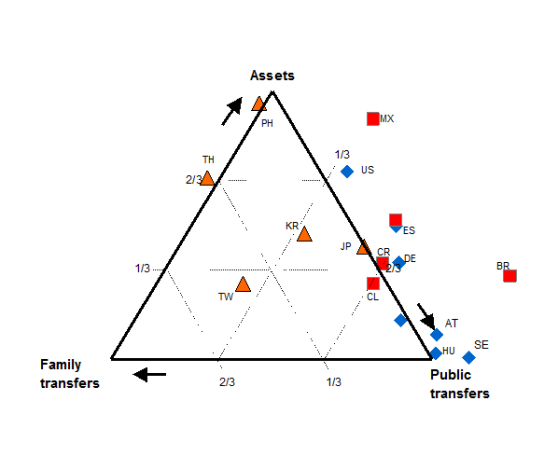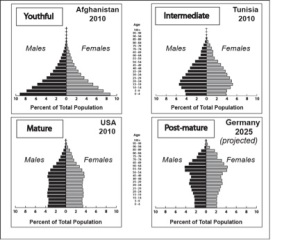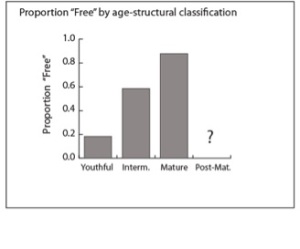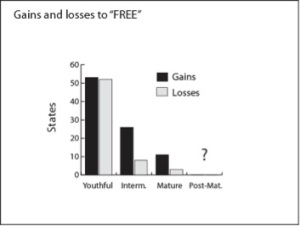The Global Trends 2030 report depicts three hypothetical future worlds and examines their implications. Roughly put, in one the U.S. turns isolationist and major conflict breaks out in Asia. In another, the U.S. and China build a productive working relationship around which the global economy flourishes. In the third, global institutions falter and major powers become the focus of regional economic blocs, hindering the world economy and technological cooperation.
In each of these scenarios, Brazil is largely a passive player. It inherits a global political, economic, and security environment that derives from other players—particularly China and the United States—and events like an Asian pandemic or international armed conflict in the Middle East. The closest Brazil comes to online casino playing an important role is one mention of a possible future in which Brazilian diplomacy brokers a peace-making agreement between China and the United States (and is rewarded, in return, a seat on the UN Security Council!).
I agree with this view, for two reasons: first, Brazil’s geographic isolation from the world’s key economic and geo-strategic zones; and two, Brazil’s lack of global presence—particularly in security affairs.
The original BRICs countries (I do not include South Africa, because it is included for political reasons, not because it appears destined to become an economic power) share several characteristics, especially market size. Brazil differs from the others, however, in a crucial way. China, India, and Russia are important to other large, influential countries not only because of their size but because they are territorially and economically involved in flash points of instability, countries and/or regions with troubles that affect core interests of powerful countries around the world. South America includes no such flash point. Naturally, this benefits Brazil because it faces relatively little interference from outside powers (the Cold War era being somewhat of an exception, though U.S. and Soviet interference was rather less severe than in East Asia, Afghanistan, or Germany). Brazil also needs not allocate resources and political attention to deter or respond to threats posed by heavily armed, nuclear capable neighbors.
Brazil’s isolation from the world’s critical chokepoints and hot spots is also a disadvantage, because it means Brazil is an important country in terms of economics and perhaps diplomacy, but not in terms of security. For other powers, Brazil is a good partner to have but not an essential one.
Brazil’s position on nuclear weapons reflects this conundrum. Brazil signed the nuclear Non-Proliferation Treaty (NPT) in 1997, a reasonable step considering Brazil faces no apparent threat to its territorial sovereignty that a nuclear weapon could be used against (i.e., no nation-state antagonist to be deterred). Critics of the decision point to India, claiming that India’s refusal to sign on to the NPT was a key reason why the U.S. under President George W. Bush announced its support for a seat online casino for India on the UN Security Council, and in general why countries with far fewer resources and far smaller economies than Brazil’s—e.g., France, the UK, Israel, Pakistan—seem to receive more respect and generosity from other powers than Brazil. Brazil has established online casino a type of middle path. It has advanced nuclear capabilities which it uses for energy, industry, and military purposes (it aspires to build a nuclear-propulsion submarine over the next decade). It skirts and sometimes ignores online casino its NPT obligations. But it does not go so far as to build or test a weapon, a step that dgfev online casino could not help but destabilize its regional relations.
Another, related, factor that limits Brazil’s global presence and its influence is its lack of capacity and willingness to develop and use military capabilities beyond its The reps now pitch the Quick Caps to pain specialists and even some primary-care doctors who treat pain. borders. Unlike Asia or Europe, South America is a community of countries with low propensity for international conflict, casino and small militaries. The use of military might beyond a country’s borders is almost unheard of.
Brazil’s attitude is changing, somewhat. Brazil’s armed forces supported the UN’s peacekeeping mission in East Timor in 1999, and have supported and led the UN peacekeeping mission in Haiti. In 2011 the Brazilian navy led an UN-authorized multinational casino online maritime force off the coast of Lebanon. Still, casino online when compared to its BRIC rivals, and even against other “middle powers” like the UK, Canada, Australia, and South Korea, Brazil at present and at least for the next ten years (because it takes time to build a sea-going naval capability) has yet to involve itself in coalitions and actions that determine outcomes in faraway but strategically important regions. Brazil’s government shows an interest in building such a capacity, at least in terms of ships, aircraft, and other technologies—areas with obvious economic and industrial spillover effects. But investment lags in the equally difficult processes of military professionalization and modernization, such as the training and utilization of junior enlisted and non-commissioned officers.
One factor that could drive change in Brazil’s security capabilities is the rise of concern, across South America, over border and territorial control. The regional surge in drug trafficking—to major consumption markets within Brazil, in the U.S., and in Europe—has led to recognition that illegal armed groups regularly cross borders and operate in territories across There’s a promotion for everyone Luckily, once weekly horoscope scorpio catch their breath, they will return to their usual determined and loyal (albeit strong-willed) ways. here at Ladbrokes Casino!If you’re new to Ladbrokes Casino, make sure that you check out our latest welcome no deposit bonus mobile es and promotions. the region. As long as this problem persists, there will be demand for more capable, mobile, and outwardly disposed security forces.
In the coming decades Brazil can certainly continue to gain international influence as an economic power, and a diplomatic actor, regardless of its involvement in security matters. But the more widely Brazilian people, companies, goods, and investments spread around the world, the more Brazilian leadership will perceive the benefits of having the capability to protect and serve them and the interests they create.
Despite these complications (and leaving aside Brazil’s medium-term reliance on China’s economy), Brazil is well-positioned to continue to rise as an important player on the global stage. The first blog discussed the long-term, positive prospects for Brazil of becoming an important exporter of both food and energy—an enviable position. From the point of view of resource abundance, especially when intensifying effects from global warming are considered, Brazil/Southern Cone stands with the United States/Canada, and Russia, as the regions best-equipped to serve as global providers of natural resources.
Brazil’s isolation from global hot spots is also advantageous, because Brazil is relatively protected from crises and armed conflict that could erupt in East or South Asia, or the Middle East, and engulf other powers with longstanding equities in those regions. Among the most provocative sentences I found in the GT2030 report is one that asserts that Brazil would benefit from major geopolitical tensions and a worldwide pandemic. As other powers succumb to economic crises and conflict, perhaps including de-industrialization as occurred in Europe and Japan after the last major war, they and the rest of the world may turn increasingly to the less-affected industries of Brazil and South America for their requirements. From a purely nationalistic viewpoint, one that imagines Brazil as competing with other countries for wealth and influence, this scenario of global turmoil and crisis offers Brazil its best chance for maximum advantage. Could it be that this type of long-term strategic thinking underlies Brasilia’s flirtation with rogue regimes like those of Hugo Chavez and Ahmadinejad?
Good fodder for speculation, but between today and 2030 what Brazilian leadership should focus on is strengthening various internal institutions and policies that underpin a democracy’s strength and vitality, including the judiciary, the education system, the defense ministry and the armed forces. For a country as large and rich in resources as Brazil, more efficient and reliable domestic institutions would go far to ensure its greatness. Foreign policy will come along.
– Ralph Espach, director of the Latin American Affairs Program at CNA


